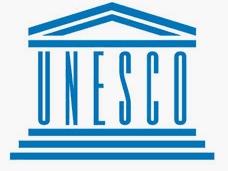
UNESCO is launching a dynamic, data-driven, multi-stakeholder Sport-Education Partnership (SEP) framework.
SEP will unite public and private stakeholders behind an integrated vision of development which harnesses the combined power of sport and education eco-systems to progress the United Nation’s Sustainable Development Agenda (3, 4, 5, 17).
The Sport-Education Partnership framework is impact-oriented and aims at creating transformative behaviourial- and systems-based change, starting with schools.
The first step for this was taken with the creation of UNESCO’s Quality Physical Education (QPE) Policy Package, which practically supports governments develop inclusive child-centered physical education policy.





Rio 2016 and Dow Using Technology and Collaboration to Deliver a Low-Carbon Legacy
Details
The Rio 2016 Olympic Games are making history by leaving a significant legacy of low-carbon technologies in Latin America, while set to balance 2 million tonnes of CO2 equivalents. This will be achieved through the emission reductions obtained in initiatives in Brazil and Latin America described in this report.



The carbon mitigation programs follow the principles outlined in Dow’s Climate
Solutions Framework, a framework purposely built for these partnerships by Dow scientists together with external carbon experts. The Climate Solutions Framework allows event owners and organizations, in collaboration with partners, to implement a structured yet flexible approach to quantify and mitigate carbon footprints while also
leaving a positive social and economic legacy. These mitigation projects go beyond the physical boundaries of the events or the organization’s direct control, extending climate action to a global playing field.
Through its carbon mitigation projects, Dow has already delivered to date 4.3 million tonnes of carbon dioxide equivalent (CO2e).1 By 2026, the reductions are projected to exceed 6 million tonnes of CO2e.
Within this report, we describe Dow’s efforts to build capacity, drive change and achieve the adoption of low-carbon technologies. We hope the lessons learned will provide actionable advice to organizations across sectors to help build effective collaborations and accelerate the introduction of more sustainable technologies
globally.


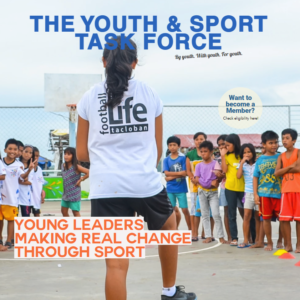
The Youth and Sport Task Force is an initiative of the UNESCO. It represents creative, passionate and innovative young leaders across Asia and the Pacific who use sport as a tool for positive social change in their communities.
The youth are in control. They design their own programmes, determine their own priorities and collectively, decide on the strategic direction of the Task Force. UNESCO supports the Task Force by providing opportunities for the members to promote and enhance their work by connecting with each other and with regional and global opportunities for growth and capacity building.
All programmes represented by the Task Force are aligned with the United Nations Sustainable Development Goals.
We are cultivating a community of young change-makers who are already making a big impact, by youth, with youth, for youth.
Additional information available at https://www.youthandsport.org/



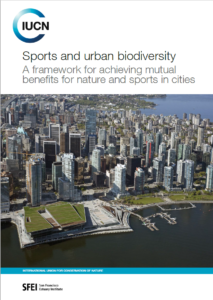
IUCN – Sports and urban biodiversity
A framework for achieving mutual benefits for nature and sports in cities
This guide provides a set of principles to help sports federations, local organising committee, developpers, investors and local ahthorities to incorporate the needs of urgan natures and biodiversity into their planning process. From setting up ecological monitoring systems to improving the management of habitats, there is a rande of ways in which the sports industry can help urban nature flourish





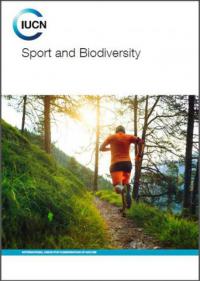
IUCN – Sport and biodiversity
Sport can have significant negative impacts on biodiversity, through the construction and use of sports venues and the staging of sporting events. Understanding and managing the potential negative impacts and opportunities for conservation is vital for ensuring that sports venues and sporting events deliver successfully both from the financial and operational standpoint. This guide is designed to help decision makers understand these potential impacts, and to present options for mitigating them, as well as for maximising opportunities to use sport as a way to promote and enhance biodiversity conservation.




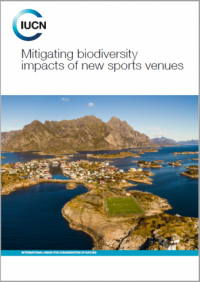
IUCN – Mitigating biodiversity impacts of new sports venues
Wherever a new sports venue is built, or the refurbishment of an existing venue is undertaken, it is likely that biodiversity will be affected by that development, although the significance of impacts on biodiversity – both negative and positive – will vary enormously from sport to sport and location to location. Sports organisations, public authorities and financial institutions as well as those involved in the actual construction and decommissioning of venues all have a role to play in managing the range of impacts that sport venues may have on biodiversity. This includes implementing different measures that can be taken to mitigate any negative impacts and adopting approaches that contribute to biodiversity conservation. Moreover, with careful planning and design, new sports venues and the expansion of existing sites or temporary facilities can, in some cases, even contribute to an overall gain of biodiversity. This report offers in-depth guidance on how to integrate biodiversity considerations in the development of a new venue or a temporary facility, including five checklists covering all aspects from the early planning stage and site selection to the decommissioning.





IUCN – Mitigating biodiversity impacts of sports events
There is growing recognition of the need for sport and sports events to be conducted in socially and environmentally responsible ways and this is reflected in the attitudes of governments, public authorities and regulators. This means that taking a proactive and diligent approach to environmental management is a vital part of the sport sector’s licence to operate as well as growing and sustaining fan bases. Biodiversity conservation should be a key element in any environmentally responsible approach to sports event management. These guidelines focus on the often complex links between biodiversity and sport, and highlight that sports events can also benefit biodiversity. Each event offers an opportunity to raise public awareness of the value of nature and influence attitudes towards biodiversity and its conservation. These guidelines provide an overview of the issues and risks. They also offer help on how to make informed choices in avoiding harmful impacts and achieving positive outcomes. All parties involved in the planning and delivery of sports events are responsible for understanding and managing the potential biodiversity impacts and opportunities to ensure no lasting harm, and preferably a lasting positive legacy.





Sport Sustainability Introduction : How to get started
This module is part of a 12 clips guide created by SportAccord, AISTS, PI, and IOC, to help us understand sustainability as a whole, and look at what it means. Here you can find informations to get started on creating a sustainable sports event. The different topics include management buy-in, funding and financing, education, available resources and engagement. (Video 6/12)


















2018 Sporting Chance Principles on Sport and Human Rights
Sport relies on a rules-based system, fair play, respect and the courage, cohesion, support and goodwill of society in all its facets, including athletes, fans, workers, volunteers and local communities, as well as governments, businesses large and small, the media and sports bodies. The foundational principles of the world’s preeminent sports bodies speak to universal humanitarian values, harmony among nations, solidarity and fair play, the preservation of human dignity, and commitment to non-discrimination. These values have much in common with international human rights instruments, principles and standards. Recognising that there is a generation of work to be done to fully align the world of sport with the fundamental principles of human dignity, human rights, and labour rights; the Advisory Council of the Centre for Sport and Human Rights are committed to working towards the fulfilment of these Sporting Chance Principles.




